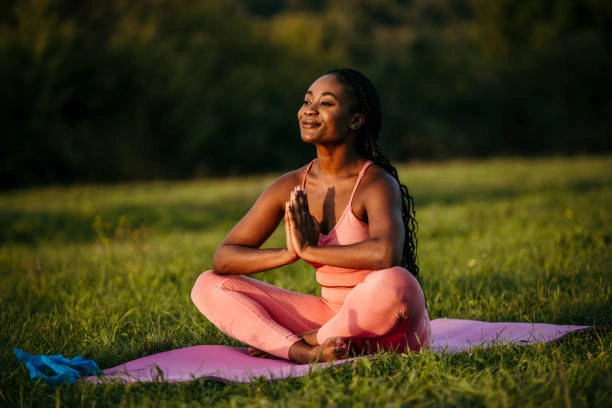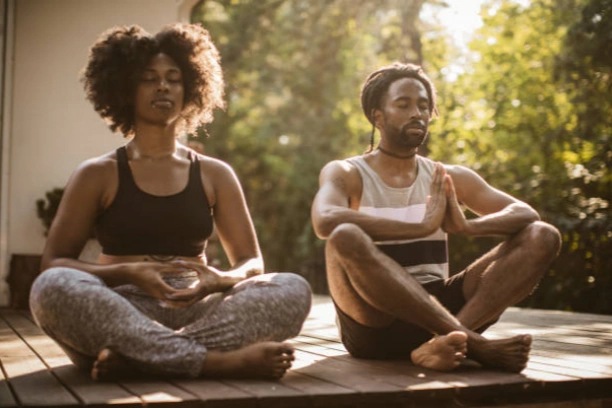Meditation—Common Methods for Relaxation and Mindfulness
As work, life, and social pressures increase, more people are experiencing negative mental states such as anxiety, panic, and depression. This affects concentration during the day and sleep quality at night, impacting both physical and mental health. In yoga, meditation is considered a way to free oneself from the influence of the three states of nature and purify the mind. Here are some common meditation methods for relaxation and mindfulness.
How to Practice Meditation
Who Can Practice It?
Meditation is a form of relaxation training suitable for a wide range of people; anyone can practice it. It is especially beneficial for those with anxiety disorders, as symptoms like restlessness and agitation cause muscle tension, which relaxation techniques can alleviate by putting the body into a state of relaxation.
When to Meditate
- Morning: Morning is often considered the best time to meditate, as the mind is quiet and refreshed. It sets a peaceful and productive tone before daily activities and distractions begin.
- Noon: Meditating during lunch break provides a much-needed respite from work, boosting well-being, creativity, and productivity.
- After Work: Meditating after work helps establish a clear boundary between active work life and personal life, leaving work behind.
- Before Bed: Evening is often a time when people can truly relax. Everything quiets down, and staying alert, aware, and focused can help alleviate the day’s fatigue.
Meditation Techniques
- Concrete Objects: Focus on your breathing or a specific part of your body. Choose something you feel connected to, as it will make concentration easier. When you emphasize sensory perception and let go of excessive thinking, you will feel energy flowing through your body naturally.
- Imaginary Objects: You can think of nothing and wait for something to come into your mind. For instance, imagine being at sea or in a forest, which can bring spiritual insights. Your thoughts are also a form of energy, and gradually, you can gain clarity on many things, leading to a sense of mental and physical well-being.

Principles of Meditation
- Choose a dedicated space for practice to help you find peace and enter the meditative state more easily.
- Select a consistent time for meditation, ideally in the early morning or evening.
- Meditate at the same time and place to help the mind relax and calm down quickly.
- Keep the body warm during meditation and guide your awareness to stay calm.
- Maintain a regular breathing pattern, starting with five minutes of deep breathing, then letting the breath settle.
- Establish a rhythmic breathing structure: inhale for three seconds, exhale for three seconds.
- If your mind starts to wander, don’t worry; don’t force it to settle.
- Once you are calm, focus your awareness on a fixed point, such as the brow or heart area.
- Don’t force a pure meditative state to occur; let any wandering state naturally continue.
Forms of Meditation
- Focused Meditation: Concentrate all your energy on a single point, which could be an object, shape, sound, meaningless word, phrase, prayer, or breath, excluding other thoughts.
- Object Meditation: The focus point could be an object or shape, like a candle or the junction of the ceiling and wall. Mandalas are commonly used, being circular objects with complex designs and vibrant colors.
- Breath Meditation: Rather than listening to your breath, “watch” it as it enters your nose, throat, lungs, and exits. Follow the flow of air to minimize distractions.
- Chant Meditation: Focus on a meaningless word, phrase, or prayer, and repeat it continuously. The chant typically consists of short phrases or syllables, such as “one, two.”
- Open Meditation: Allow any stimuli to enter or exit your awareness without restriction, observing them in a detached way.
- Movement Meditation: Practice while moving or walking, staying immersed in the surrounding environment and eliminating other distractions and stimuli.

Common Techniques for Relaxation and Mindfulness
- Mindfulness:
Be purposefully and consciously aware of everything in the present moment without making any judgments, analysis, or reactions—just observe and notice.- Methods:
- During meditation or other practices, focus your awareness on a specific activity.
- Use your breath to bring attention back to the present, observing the rhythm without intentionally changing it.
- Accept any thoughts that arise without judging them.
- Methods:
- Sitting Meditation:
Also known as “cross-legged sitting” or “quiet sitting,” this practice promotes health and longevity while enhancing wisdom. It cultivates inner strength and mental discipline.- Methods:
Sit with eyes closed and legs crossed. Place the left foot on the right thigh, then the right foot on the left thigh for the “Vajra posture,” or reverse the order for the “Auspicious posture.” Regulate breathing and keep the hands in a fixed position, avoiding all thoughts.
- Methods:
- Entering a Meditative State:
This refers to entering a state of Zen meditation, where one sits upright with eyes closed and focuses the mind.- Methods:
Sit upright and practice abdominal breathing. Inhale deeply, pause, then exhale. Imagine breathing in the power of nature, feel the body being purified, and exhale impurities, leaving 30% of the breath in the lower abdomen.
- Methods:

- Daydreaming:
A state of absent-mindedness where one pays no attention to external matters.- Methods:
Find a comfortable sitting position, let your mind wander, and immerse yourself in your own space, where thoughts move slowly or almost stop in a quiet atmosphere.
- Methods:
- Hypnosis:
A state similar to sleep but distinct, induced through relaxation, monotonous stimuli, focused attention, or visualization.- Methods:
- Direct Method: Use short phrases or gentle touch to induce a sleep-like state.
- Indirect Method: Use a bright object or monotonous sound source for the patient to gaze at or listen to, while suggesting relaxation.
- Methods:
- Sleeping:
Close your eyes and enter a sleep state. A comfortable sleep environment can improve sleep quality.- Methods:
If stress-induced, difficulty falling asleep can be alleviated by reading or listening to music. Soaking your feet in warm water before bed is a gentle stimulus that promotes sleep. A balanced diet and regular exercise also improve sleep quality.
- Methods:







